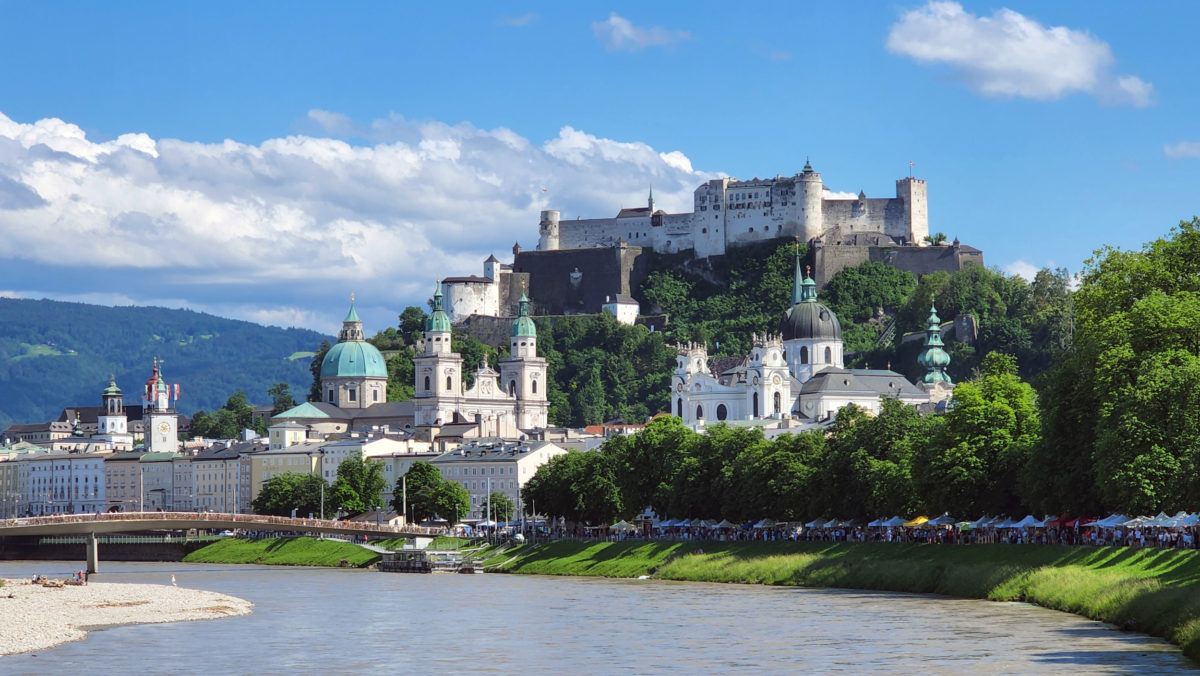by Alan K. Lee
Salzburg, Austria is a beautiful, charming, and historic city on the turquoise blue Salzach River. Salzburg’s old town (the Altstadt) is wonderfully preserved and is a UNESCO World Heritage Site. It would be easy to imagine yourself time traveling back to medieval days while walking its streets were it not for the hordes of (other) tourists who are drawn to Salzburg in all seasons.
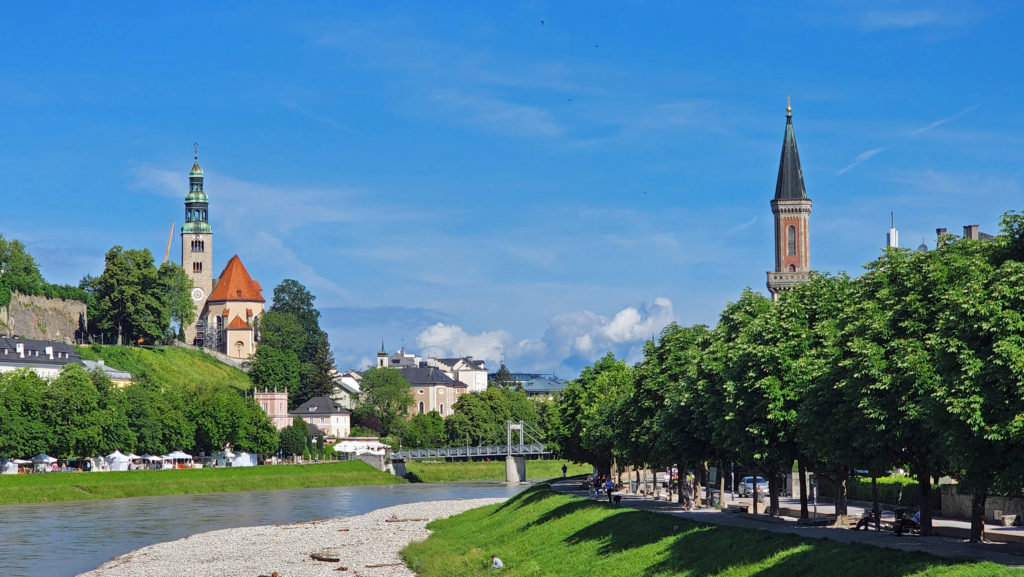
Salzburg was Mozart’s birthplace and boyhood home, and that draws many classical music fans to the city. And much of The Sound of Music was filmed in and around Salzburg. That draws many of fans of the movie (and there are millions of them).
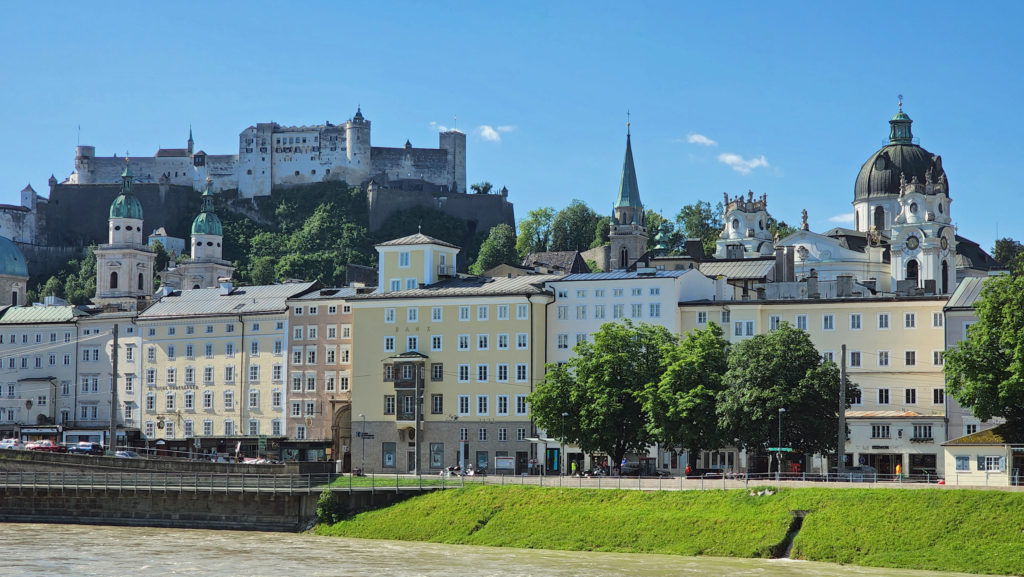
Many visitors come for the summer Salzburg Festival with its classical music concerts, opera, and theater performances. Others come in January for the Mozart Festival. And just the beauty and charm of the city draws many more. But despite the crowds, Salzburg was one of the highlights of our recent trip.
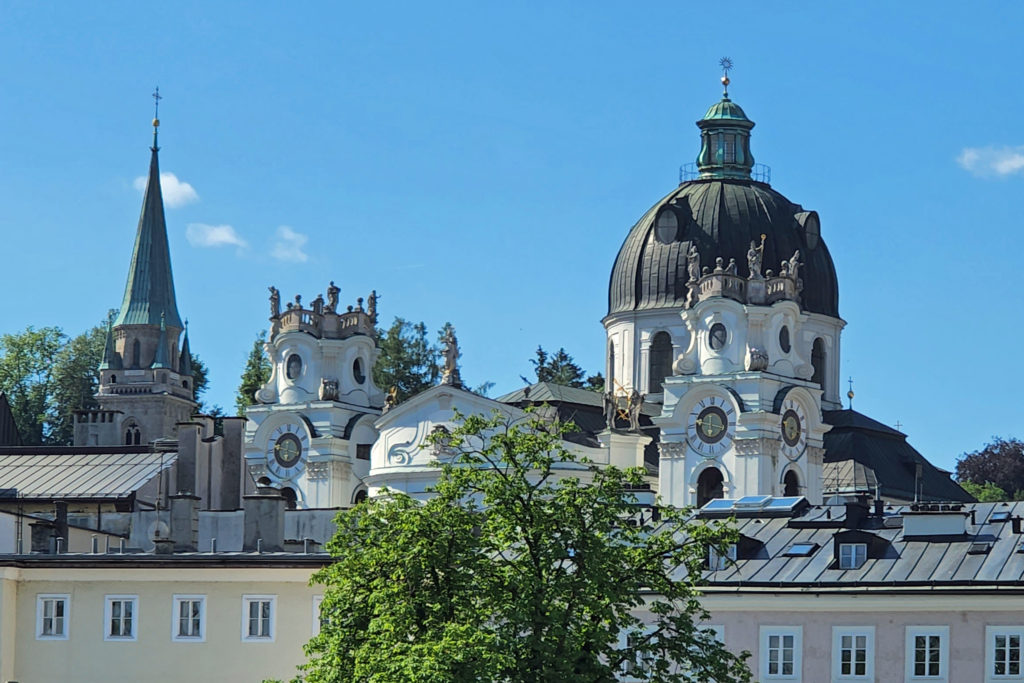
Even if you have only one day to explore Salzburg, the Altstadt is compact, easily walkable, and full of historic sites, wonderful baroque architecture, palaces, gardens, churches, museums, restaurants, and much more. You can pack a lot into one day. My wife and I did just that.
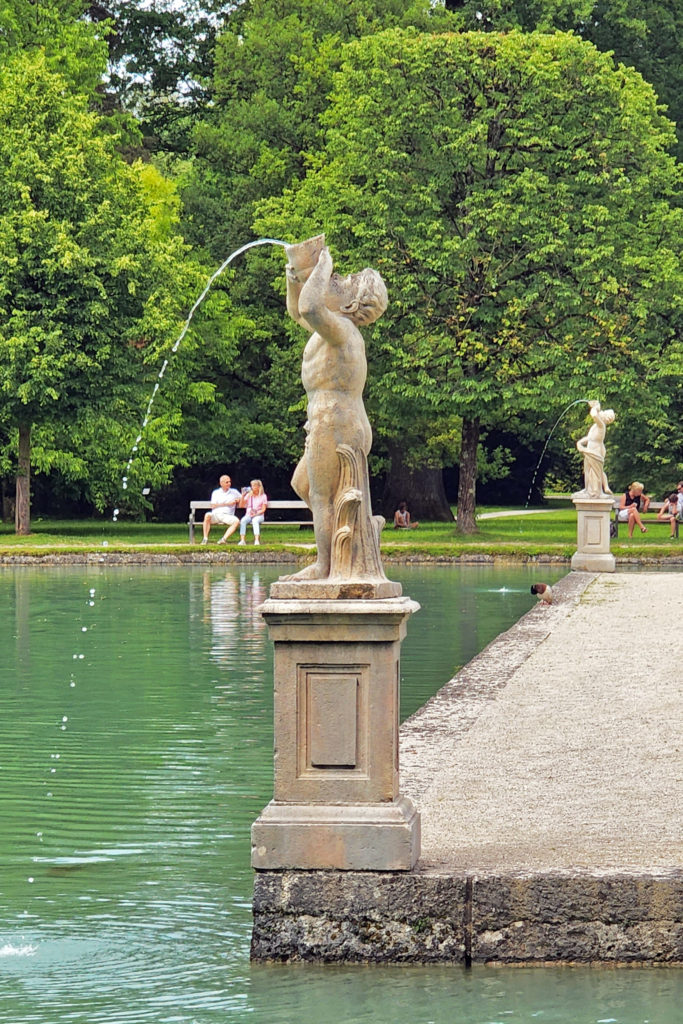

We arrived in Salzburg on a Sunday afternoon. Our first stop was the Hellbrunn Palace (Schloss Hellbrunn) on the south edge of the city. This was actually the last stop on a bus tour of Sound of Music filming locations in the rural area east of Salzburg. We didn’t tour the palace, but the large surrounding park provides plenty of shade on sunny days, and the palace’s garden is beautiful and renowned for its trick fountains (you might get wet) and whimsical sculptures. You’ll also find the pavillion where “Sixteen Going On Seventeen” in the The Sound of Music was filmed, although it has been moved from its original location.
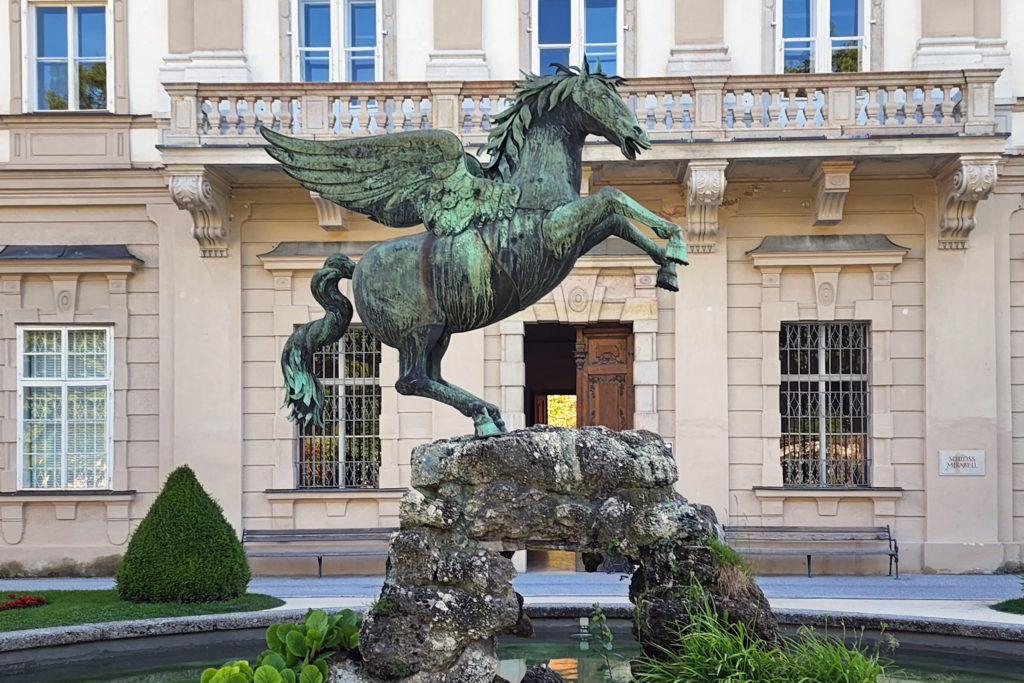
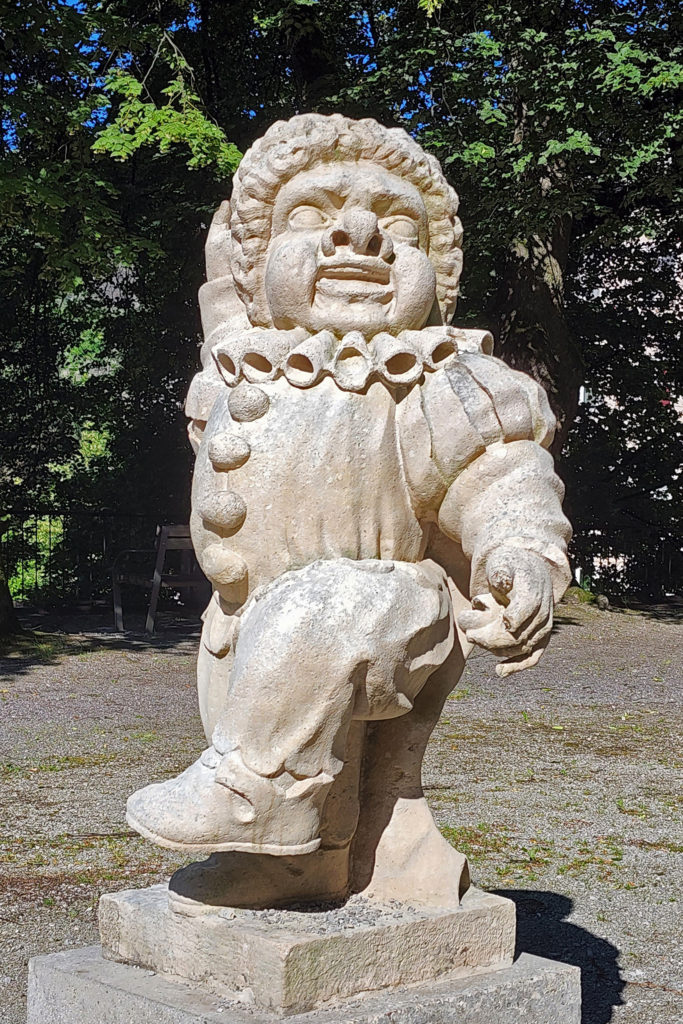
Our only full day in Salzburg started with a guided walking tour of the Altstadt that took us first to the Mirabell Gardens where parts of The Sound of Music were filmed. Fans of the movie will recognize the Pegasus Fountain, the Dwarf Garden, and the Vine Tunnel. We didn’t tour Mirabell Palace (Schloss Mirabell), but entrance is free, and you can attend evening chamber music performances in the Marble Hall, where some of the young Mozart’s earliest performances took place.
Our tour then took us to Mozart’s residence (Mozart-Wohnhaus) where he lived from age 17-25, and across the Salzach River to his birthplace (Mozarts Geburtshaus), now a museum. In the Altstadt you’ll also find the Salzburg Cathedral (Salzburger Dom), the Mozart Plaza (Mozartplatz) with its large statue of Mozart, the Residenzplatz, a large plaza with a 15 meter (50 foot) tall fountain, the Salzburg Museum, and many other historic and interesting sites. Guided walking tours of the Salzburg Altstadt are available for as little as $10 per person, and Lonely Planet has a guide to free things to do in Salzburg that includes a self-guided walking tour.
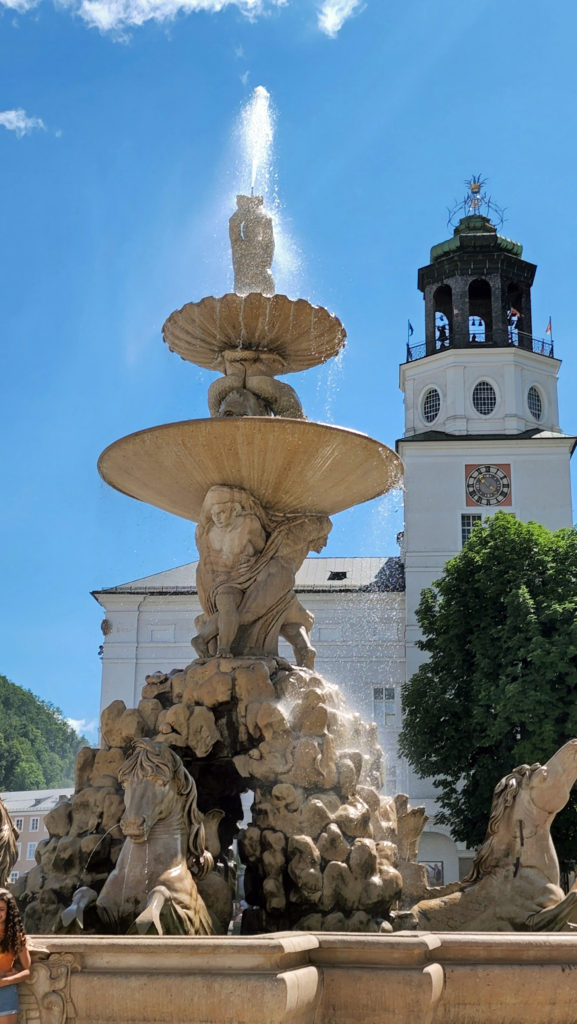
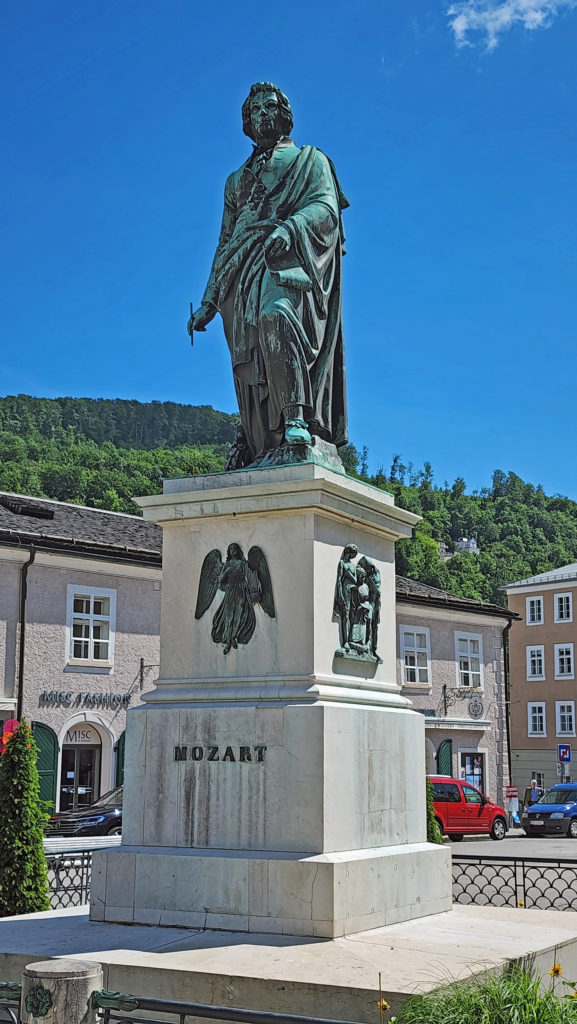
Although you can have a great time and see a lot of interesting sites without spending much (or any) money, purchasing a Salzburg Card can save you a good deal of money if you want to visit the Fortress, tour Mozart’s birthplace or residence, and visit any of the city’s many museums. A Salzburg Card also gives you free rides on the city’s public transit system. Cards can be purchased that are valid for 24, 48, or 72 hours. Twenty-four hour cards cost €30 for adults. Forty-eight hour cards are €39, and seventy-two hour cards are €45. Children 6-12 are half price. Cards are about 10% less in winter.
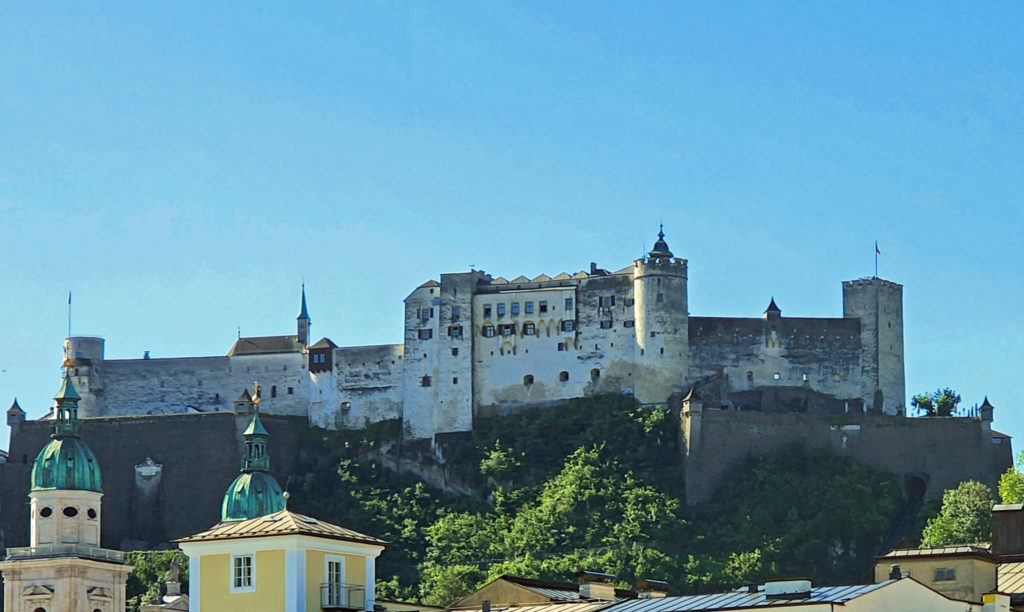
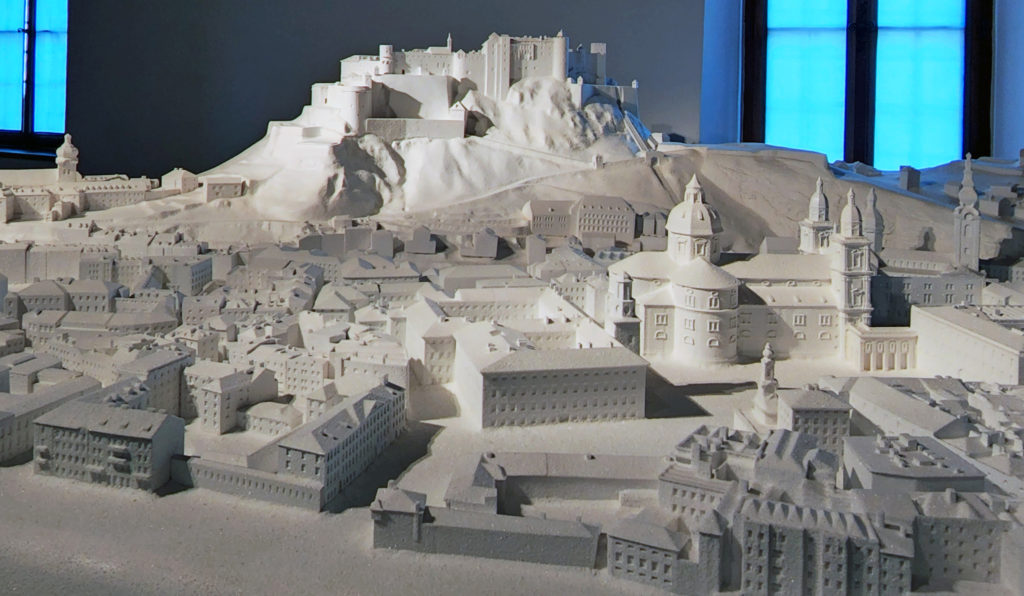
The Salzburg Fortress (Festung Hohensalzburg) looms over the Altstadt and can be seen from most of the city. It’s one of Salzburg’s must see attractions. Our tour didn’t include the Fortress, but we had all afternoon on our own, and it was our first stop. We took the funicular, but you can also walk up. Either way, I’d recommend getting “all inclusive” tickets that get you into the museum, arsenal, princely chambers, and the Magic Theatre. The current price for an all inclusive funicular adult ticket is €16.60 (about $17). Walk-up all inclusive adult tickets are €12.60 (about $13).. Admission is free with a Salzburg Card. Even if you don’t have a Salzburg Card, the Fortress is well worth the price of admission, even if just for the amazing views of the city and surrounding mountains. Climb the observation tower for the best views.

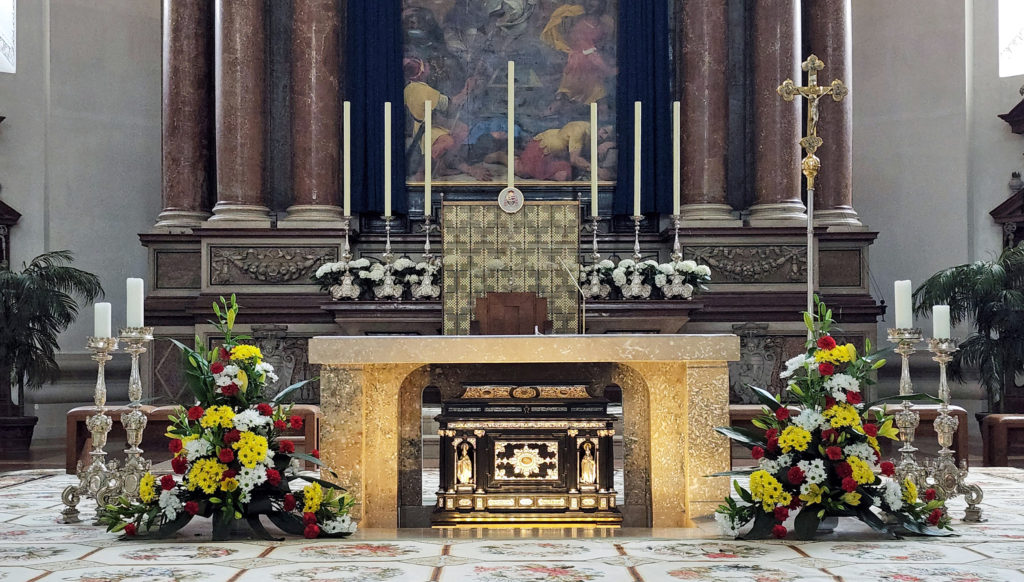
After touring the Fortress, we returned to the Cathedral and toured the interior. The exterior of the cathedral is not as grand as cathedrals in many European cities, but the interior is stunning.
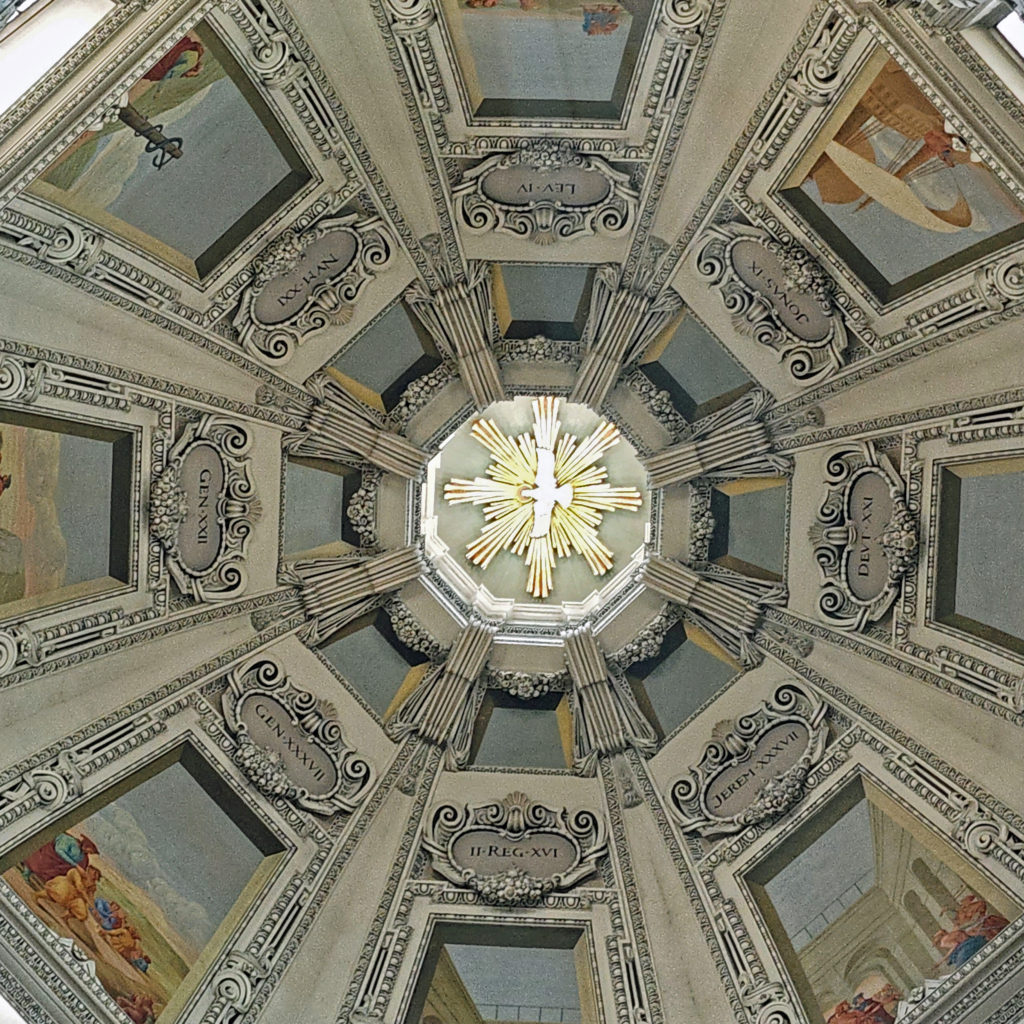
There has been a cathedral on the site for more than 1200 years. The original cathedral was built in 774 AD and burned down in 842. The second was severely damaged in the 16th century and was demolished. The current cathedral dates to 1628. The cathedral was damaged in World War II by an Allied bombing raid, but was rebuilt after the war, and reopened in 1959. It is by any account spectacularly beautiful. Entrance to the cathedral is free.
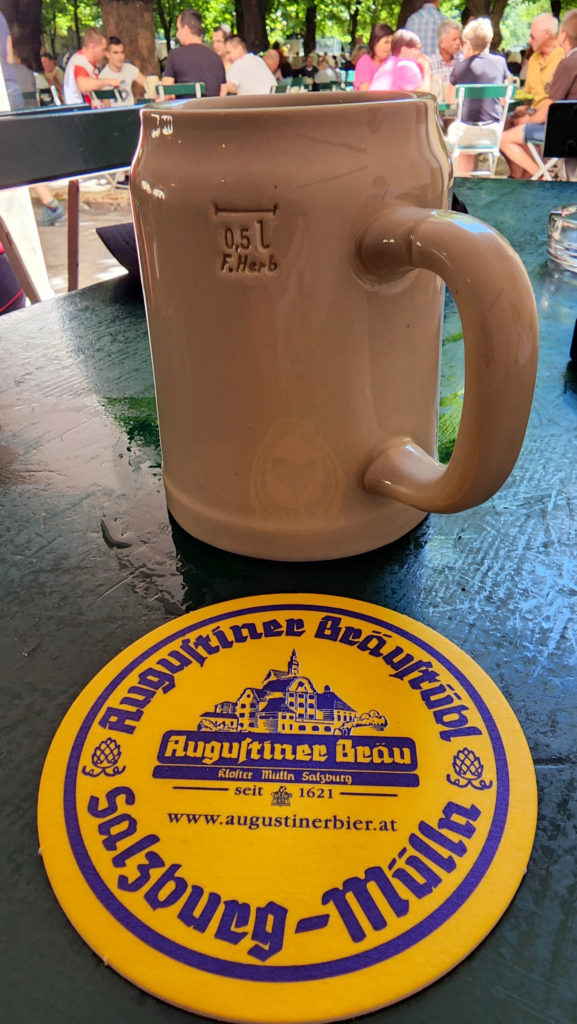
Our final stop that afternoon was the Augustiner Braustubl beer garden. Most of the seating is outside, under a canopy of trees. It happened to be a holiday, though, and the place was packed (but maybe it always is). We had to settle for a table in the smoking section under a second story patio, but that was fine. It was open to the main garden area and only a couple of people were smoking. And the beer was good, and cheap. There are other beer gardens, of course, but the Augustiner Brewery is ancient and iconic. The Munich brewery dates to 1328. The Salzburg brewery is a little younger. It’s only been there for 400 years. It opened in 1621.
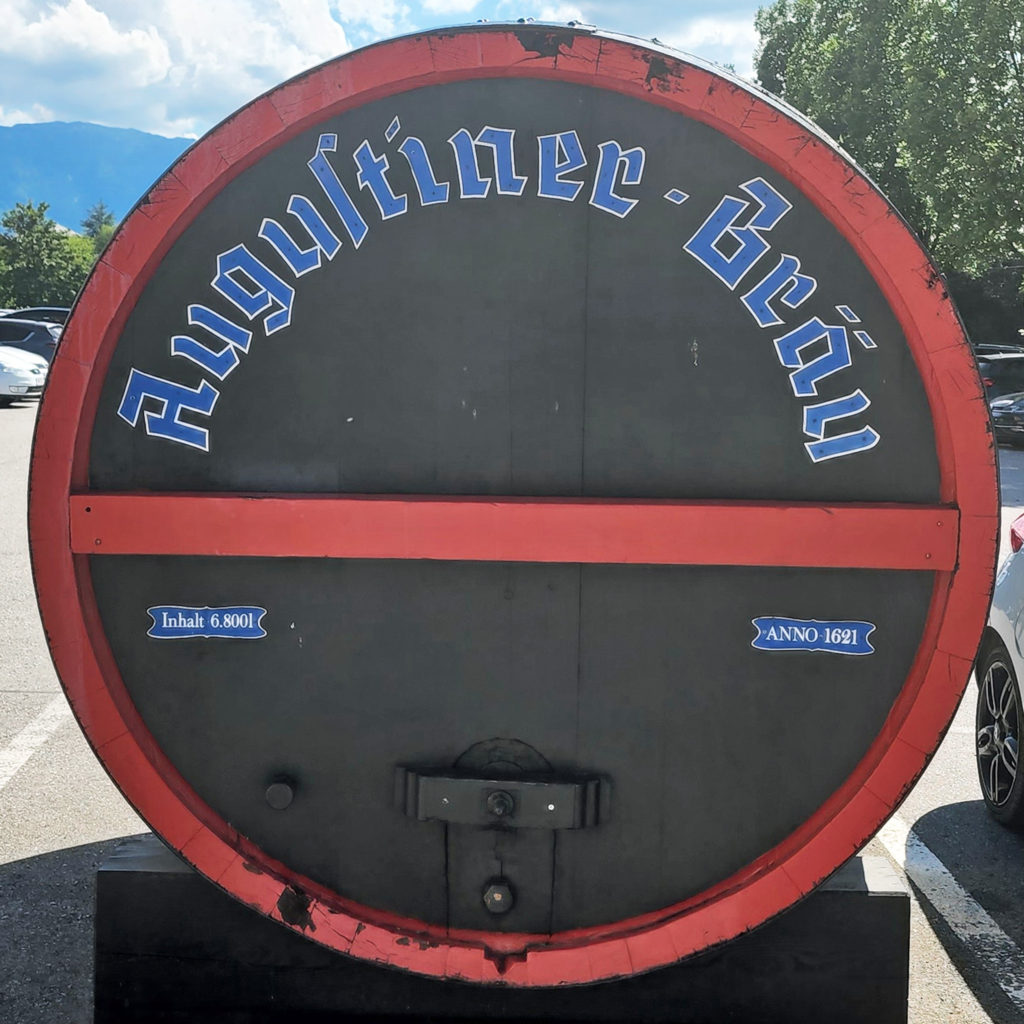
That evening, we dined at a local restaurant not far from our hotel. It wasn’t listed in our guide book, but the food and the service were both very good, the prices reasonable, and by the look of things, the locals vastly outnumbered our fellow tourists. The moral here is don’t be afraid to ignore the guide book recommendations. You can find good, authentic Austrian cuisine at a restaurant that doesn’t cater to tourists, and you can dine like a real Salzburger.
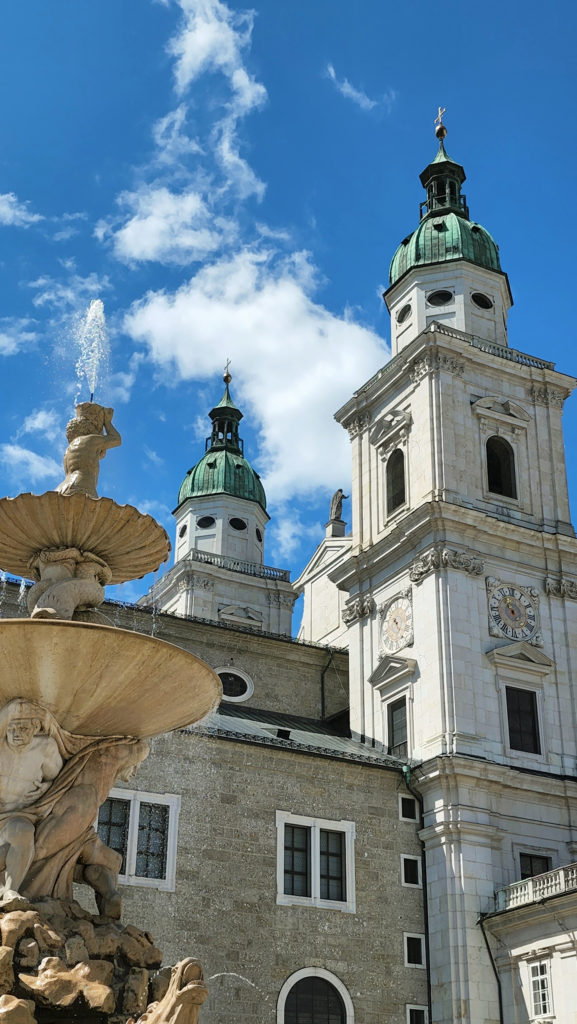
The next morning we were off to Munich, but our brief time in Salzburg left a lasting impression on us. We definitely recommend visiting Salzburg at some point in your life, if you can. It certainly gets two thumbs up from us.
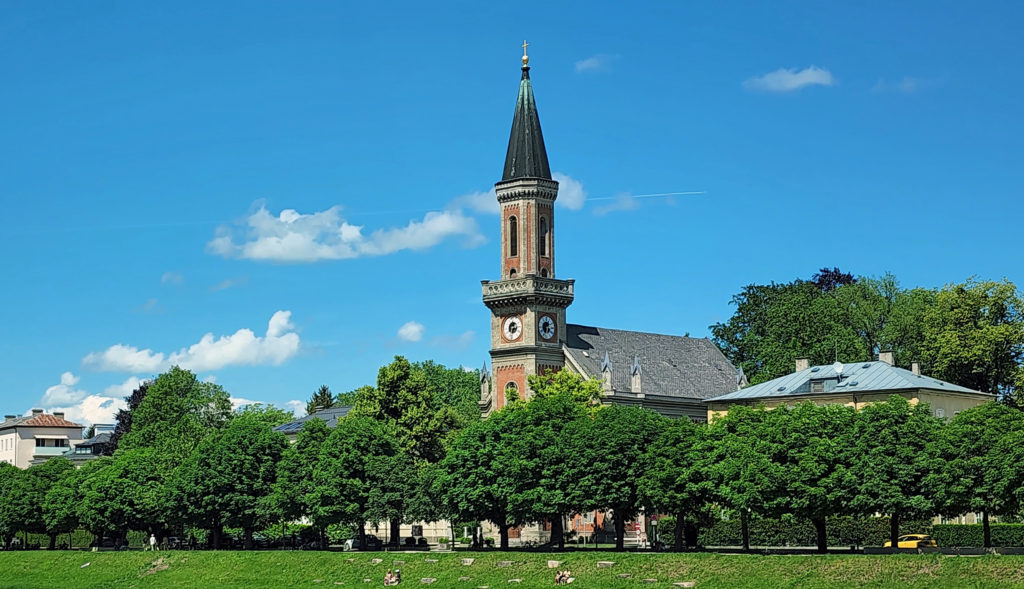
Our tour of Salzburg was an extension of our recent Danube River cruise. A river cruise can be a good way to get at least an introduction to European history and culture. And the cruises themselves have their own charm and have several advantages over both other types of organized tours and independent travel. Rhine and Danube River cruises, in particular, are popular with Americans making their first trip to Europe. But we also found that many of the passengers on our ship had done at least one prior river cruise or had made other visits to Europe, or both.
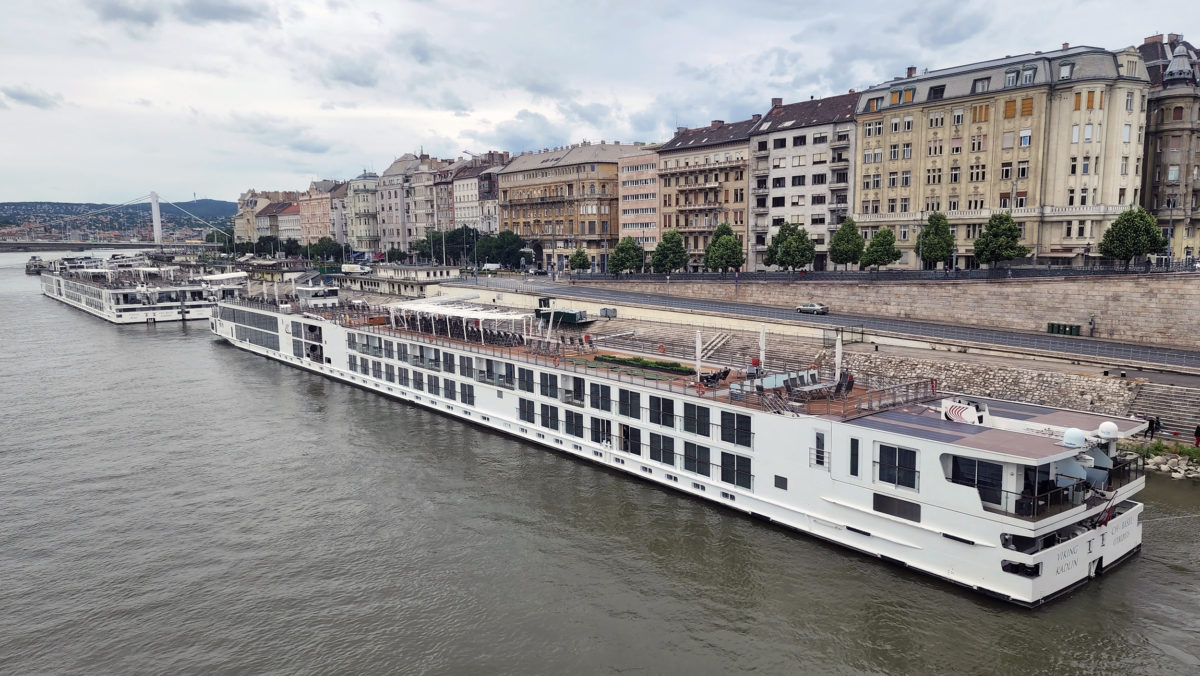
Our cruise began in Budapest and ended in Passau, Germany eight days later. In between we visited Bratislava, Slovakia, Vienna and Krems, Austria, and Cesky Krumlov in the Czech Republic. And we spent an afternoon cruising the beautiful Wachau Gorge. If you think you might enjoy a European river cruise, check out our river cruising post here for more information and a few tips.

Posted August 6, 2022
All photos © Alan K. Lee

